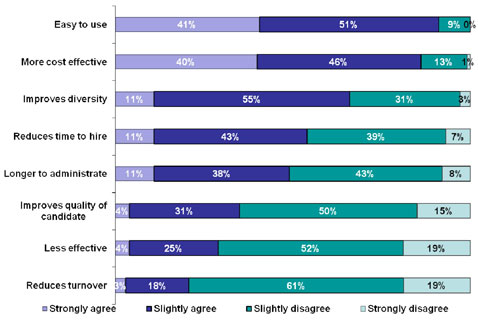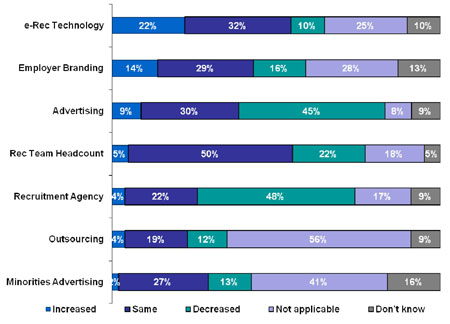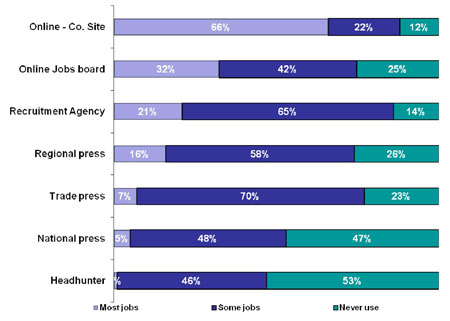

WCN Personnel Today Survey Part 2:
Recession drives recruitment online
Recession drives recruitment online
 Charles Hipps is founder and managing director of award winning e-Recruitment software supplier WCN PLC
(www.wcn.co.uk)
and authored the “Guide to Best Practice e-Recruitment Projects” on behalf of the Government. To find out more about WCN
PLC or discuss this article please visit
www.wcn.co.uk, email
chipps@wcn.co.uk
or call 0208 296 5908.
Charles Hipps is founder and managing director of award winning e-Recruitment software supplier WCN PLC
(www.wcn.co.uk)
and authored the “Guide to Best Practice e-Recruitment Projects” on behalf of the Government. To find out more about WCN
PLC or discuss this article please visit
www.wcn.co.uk, email
chipps@wcn.co.uk
or call 0208 296 5908.
|
While agencies remain important (86% of organisations give some or most of their jobs to agencies), the last year has witnessed a substantial drop in the proportion of vacancies sourced via agencies, from 40% to 25%. |
| The results of an exclusive survey by WCN PLC, leading provider of e-Recruitment and talent management software, in conjunction with Personnel Today, reveals the experiences of 400 Personnel Today readers, including HR Directors, Board Level Directors and Managers. | Organisations have turned to online (fig. 3) because it is cost effective (86% of organisations), easy (92%), improves diversity (66%) and time-to-hire (54%). However, there are concerns over candidate quality- only 35% of organisations felt it improved quality while 65% disagreed. |
|
As described in Part 1 of WCN Personnel Today Survey, almost
half (46%) the organisations surveyed have reduced their recruitment budget – a quarter of these by more than 50%.
These cuts (fig. 1) are most severe on recruitment agency and advertising budgets (48% and 45% of organisations reducing these respectively), while spend on e-Recruitment technology is being increased (22% increasing v 10 % decreasing). |
fig. 3. Opinions of Online Recruitment 
|
fig.1. Specific budget changes verses last year. 
|
Despite the downturn, organisations continue to invest in e-Recruitment technology. The payback from e-Recruitment
technology is very quick, so it is likely that employers are ‘spending to save’. These savings apply not only in
recruitment but also in internal mobility and redeployment. Online may be the only way to deliver the required budget
savings, and the downturn may indeed be speeding the move online.
Organisations are also maintaining their spend on employer branding (14% increasing and 16% decreasing), supporting their belief (89% of organisations) that a strong employer brand is even more important in a downturn. |
| Indeed, online has become the bed-rock of most organisations’ recruitment (fig. 2): 66% of organisations put most of their jobs on their own careers website and 32% put most of their jobs on job boards (compared to 16%, 7% and 5% respectively for regional, trade and national presses). | In addition to costs, improving diversity monitoring and meeting regulatory requirements are both significant factors in employers’ decisions to invest in e-Recruitment technology. Less intuitively, many employers are driving significant improvements in the quality of hires. By embedding structured and validated selection criteria in their e-Recruitment software, WCN clients have increased the quality of interviewees such that they hire up to one third more of the candidates invited for interview. |
fig. 2. Which of the following recruitment methods do you currently use? 
|
In WCN Personnel Today Survey Part 3 we’ll look at how
organisations are planning to use e-Recruitment in the future.
The survey comprised 403 respondents of whom 4% were board level directors, 8% were directors and 62% were department heads or managers. |